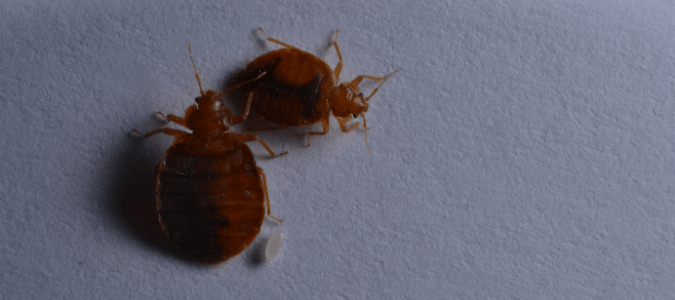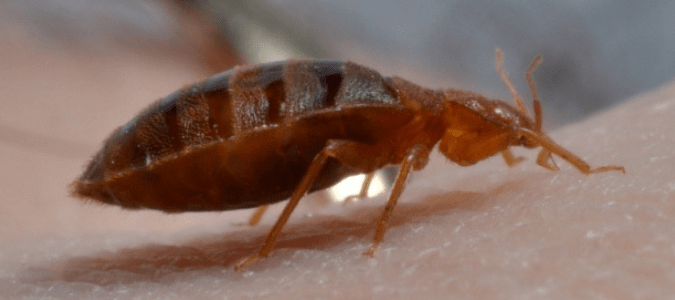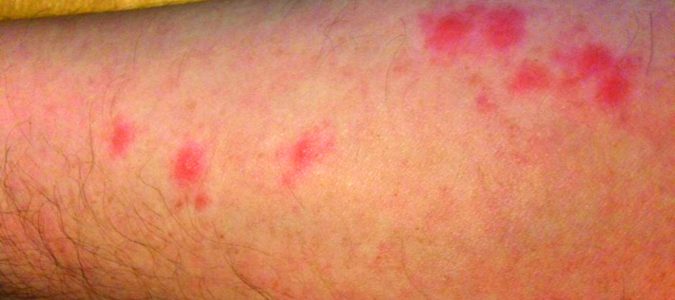Are bed bugs infesting your home and biting you at night? These pests are not only invasive, but they can also cause you physical discomfort.
The first step to getting rid of bed bugs is identifying their hiding places. They are resilient bugs that can hide inside tiny crevices, so it’s easy for them to go unnoticed. Some of the favorite hiding spots include mattress piping, cracks in the bed frame and inside your box springs.
An advanced bed bug infestation will also spread away from your bed. It’s possible to find them hiding and laying eggs in your curtains, especially if you keep them closed most of the time.
What are the Common Bed Bug Hiding Places?
Bed bugs are invasive pests that can hide in discreet places. Their bodies are the width of a credit card, meaning they can squeeze into tiny places and go unseen for a long time. Despite their name, they hide in more places than beds and bed frames.
Here are the most common bed bug hiding places:
- Drawer joints
- Couch and chair seams
- Cracks in the bed frame and headboard
- In the seams, piping and tags on mattresses and box springs
- On the ceiling
- Under hanging artwork on walls
- On screw heads
- Inside electrical outlets
- Inside appliances
- On curtains
- Inside nightstands and dressers
- Around baseboards
As you can see, a bed bug infestation is not something to take lightly. These pests can quietly overtake your home and hide out of sight.
Bed bugs like to hide in corners and creases for extra covering. For example, you may see them on the line where your walls meet your ceiling. They like hiding along seams in chairs, couches and mattresses for the same reason. You may even discover them inside the corners of your picture frames.
There is a misconception that bed bugs prefer hiding in wood; however, this is not true. Since bed bugs can climb metal, they will also hide in metal bed frames and other materials. Their goal is to hide somewhere close to their host for easy access during meal times.
That means they usually stay around the bed and any furniture next to the bed, like a nightstand. However, if your home is heavily infested, you will also start to find them in the other areas mentioned in the list above.
Signs of an Infestation
Bed bugs typically feed on humans and other mammals at night and hide during the day. The most common way to discover an infestation is to notice bed bug bites on your body.
Bed bug bites often look like a rash. You will notice raised or flat red spots on your body that may appear in a cluster or zigzag pattern. They are usually itchy and uncomfortable.
Another way to identify a bed bug infestation is by the signs they leave behind. You may see blood stains on your bedding from their feeding session. They will also leave behind rust-colored excrement spots on your bed, clothes and walls.
If the bed bug infestation is advanced, you will see the bugs, their eggs and their discarded skins lying around. You may also notice a musty odor.
If you suspect that bed bugs are taking over your home, contact a pest control professional right away. These pests are invasive, and expert treatment is required to eradicate them completely. They can also provide you with advice on how to know if you have bed bugs in the future.
Are There Bed Bugs on Your Curtains?
Bed bugs do not fly, but they are excellent climbers and can hide in high areas, such as inside curtains. They like to live in curtains because they provide several places to hide, including the curtain creases and folds of the fabric. You may also spot them inside the curtain rod.
Another reason bed bugs like curtains are that they are dark, which helps bed bugs stay undetected. Curtains are also a great place for bed bugs to lay eggs because they excrete glue that sticks to fabric.
Where Bed Bugs Hide
However, curtains are not the first choice for bed bugs to hide. You will find them around your bed and on your mattress first. If you see bed bugs on your curtains, it’s because the infestation is advanced, and they made their way there from your bed.
You are more likely to discover bed bugs in curtains and drapes near your bed. Curtains near your couch or closet are also at risk of being infested since bed bugs also hide out in those places.
Keep in mind that bed bugs rely on their hosts to survive, so they do not live too far away from places you frequent. That means they usually stay close to your bed; however, bed bugs can also feed on you from your couch. This is why the curtains that are closest to these areas are the most likely to get inhabited.
Bed bugs that are on your curtains often move around. Since this hiding spot is not their ideal choice, they often look for a better place to hide. Curtains are risky for bed bugs because they could be exposed to sunlight and heat, which can kill them.
They are more likely to hide out for a long time in curtains that are not disturbed. However, if you frequently open and close your drapes, they will look for more stable places to live.
If you don’t see bed bugs in your curtains, that does not mean that an infestation is not present. It simply means they are hiding somewhere else, most likely closer to your bed.
Do not hesitate to call a pest control specialist to treat a bed bug infestation. Even if you haven’t seen bugs, a specialist can search for them in little-known spots that are not obvious. The faster the infestation is identified, the quicker you can control bed bugs from your home.
Do Bed Bug Foggers Work?
You can use several steps and methods to evict bed bugs. One common way is to use bed bug foggers. It’s common for homeowners to hope that bed bug foggers that they can easily buy online or from hardware stores will take care of their infestation. Unfortunately, that is usually not the case.
Bed bug foggers are often ineffective because the aerosols do not reach the bed bugs hiding in crevices. They may kill off some of the bed bugs in the open, but most of the population will be hiding in hard-to-reach places.
Bed bugs have also become increasingly resistant to common pest control solutions. A pest control specialist has access to more powerful, scientifically proven solutions to kill off bed bugs. These pesticides are highly-effective and need to be administered by trained pest control experts.
What You Can Do
However, there are other steps you should take on your own to eradicate your pest control infestation in addition to professional services. To ensure they are completely removed from your clothing and linens, wash and dry everything on high heat.
For items that you can’t wash, such as your mattress, you can go over it with a steam vacuum. When you are finished, remove the contents from the vacuum, seal them in a plastic bag, and throw them away in your big garbage bin. You should also thoroughly clean the vacuum.
After steaming your mattress, wrap it in a sealed mattress cover to suffocate any remaining bed bugs and prevent them from moving to other spots. Leave the mattress cover on for a year.
Be careful not to take items from bed bug-infested rooms into non-infested rooms in your house. Any items that can not be washed or steam vacuumed should be thrown out or stored in an airtight plastic bag for a few months to make sure the bed bugs die.
The most important thing is to be proactive about your bed bug infestation. A pest control specialist can provide effective solutions so you can say goodbye to these pests.
ABC Can Control Your Bed Bug Problem
Bed bugs are annoying pests that are hard to eradicate on your own. When you notice an infestation, contact ABC Home & Commercial Services. We have multiple strategies at our disposal to control bed bugs, so you and your family can be comfortable again.


